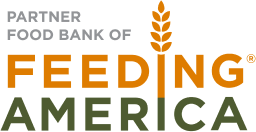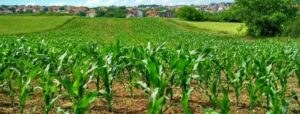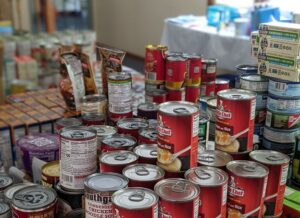By Mary Beringer, Grant Coordinator
In 2020, the Coronavirus pandemic put an enormous financial stress on people around the world. Hospitals were full, grocery store shelves were empty, and the lines at The Foodbank, Inc’s distributions were long. In 2023, most people would say things are “back to normal” (you can buy toilet paper again, at least). However, if you know anyone in the community health field, they might tell you a different story. Hospitals are still full. And foodbanks are still experiencing longer lines than usual, and they just seem to be getting longer.
The United States Department of Agriculture’s Economic Research Service puts out a report every year on Household Food Security in the United States. The Dayton Food Equity Coalition defines food insecurity as “the disruption of food intake or eating patterns because of a lack of money”. The USDA’s report is an in-depth study of the number of households in America that do not have the money to eat sufficient, nutritious meals.
This data is released on a one year delay, which means that the 2022 report just came out in October. According to the USDA, in 2022, 87.2% of American households were food secure, while 12.8% (or 17 million households) were food insecure to some degree, with 5.1% experiencing what is called “very low food security”, which is the most dire. 98% of people categorized as having very low food security “reported having worried that their food would run out before they got money to buy more”.

In 2020, national food insecurity measured at 10.5% (13.8 million households), and in 2021 it was 10.2% (13.5 million households). Yes, there were more food insecure people in America in 2022 than in 2020. Statistics for very low food security have also been on the rise since 2021, and children were more likely to be food insecure in 2022 than during the first year of the pandemic.

Food insecurity in America has not yet risen to the same level as it was in the wake of the 2008 financial crisis, but it is clear that something is having a significant impact on the way people think about and relate to food.
The USDA report does not dive into the differing factors that cause food insecurity in various households. Though this kind of data would be helpful, it would require a comprehensive, nationwide study and would likely require a great deal of resources and labor. What The Foodbank, Inc. can say from our experiences and talking to people in line, is that there are dozens of reasons why someone might suddenly find themselves in need of food assistance. They might have lost their job, or the primary source of income in the household may have passed away or moved out. There could have been an unexpected expense, such as medical bills or car trouble. They might suddenly find themselves taking care of their loved ones and needing more resources than usual. The American “middle class”, as most people imagine it, is gradually disappearing, as more and more people are one or two life changes away from food insecurity.
This fact is echoed by the USDA’s research, which shows that food insecurity in U.S. households is “recurrent, but not constant”. About a quarter of the people identified as having had very low food security in the last year only fell into that category for a month or two, and about a third of that same group were “chronically” food insecure, experiencing that condition every month or almost every month. However, on average, out of all food insecure households, most people experienced food insecurity seven months out of the year, sometimes on and off.
More research is necessary to fully understand the causes and impacts of hunger on families in America and all over the world. For example, unhoused people were excluded from the USDA’s study, and this data is already more than a year old. However, America should take this as the wake-up call that it is. With November being the month of elections, consider involving yourself in local and national politics. You might want to talk to your legislators about the Farm Bill, which can greatly impact hunger relief across America. And always remember that, regardless of the level of need, The Foodbank will always be ready and willing to help.





No comment yet, add your voice below!